A Chinese Calligraphy Journey Begins
Chinese Calligraphy. Elementary 1 is a book my calligraphy teacher recommended to me on our first meeting on a late October evening at his studio in Beijing.
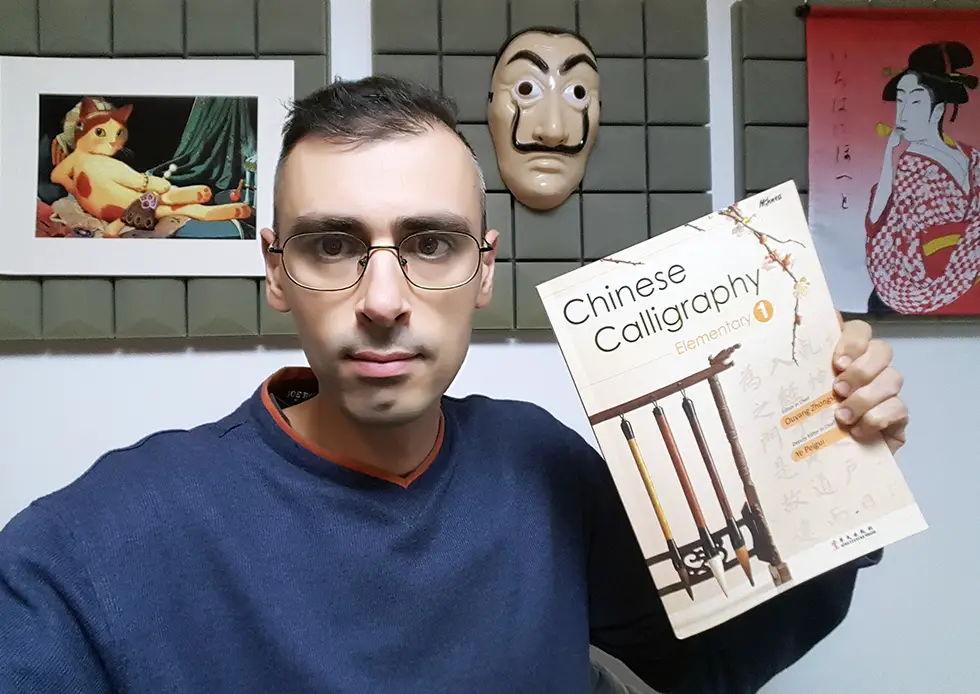
The cold had already settled in, but all was good. While waiting for the teacher to meet up with me somewhere nearby his calligraphy studio, I brought the hoody over my head and smiled to myself. I’ve been in China for more than a year and my plans to start studying Chinese calligraphy had been delayed by travel, work, and the simple act of adjusting to and settling in a new country. But, after a few failed attempts at finding a calligraphy studio and a calligraphy teacher who speaks English, I was finally minutes away from starting my very first calligraphy class.
Fast-forward an hour later… While I was overzealously practicing my very first stroke (the horizontal stroke héng – 横), my teacher pulled out a book from his bookshelf. “This would be a very good guide for you,” he said.
Chinese Calligraphy for Beginners
And so, I purchased my own copy of Chinese Calligraphy. Elementary 1. The Editor in Chief of this book is Ouyang Zhongshi 欧阳中石, a name I’ve never heard before but who, according to my teacher, is one of the most famous Chinese calligraphers in China and the current director of the Chinese Calligraphers Association. Funny enough, when one of my students (I teach Psychology at an international school in Beijing) saw the book, she recognized the name and said that all primary school students in China know this name. She even thought “Ouyang” was the name all calligraphy masters in China went by!
Master Calligrapher Ouyang Zhongshi
A quick search online made me realize how famous Ouyang Zhongshi actually is not only in China, where he received several awards and commendations, but also abroad. His books are compulsory reading for many calligraphy courses offered at famous universities. For example, the Chinese Calligraphy course at University of Florida lists the book Chinese Calligraphy by Ouyang Zhongshi and Wen Fong (Yale University Press, 2008) as “the most detailed information on the evolution of various scripts and historical development of calligraphic styles.”
Born in 1928 in Shandong province, Ouyang Zhongshi is considered one of the leading cultural historians of today’s China. His contributions to the field of Chinese calligraphy reach not only the realm of art but also that of academia. He is the founder of the first Calligraphic Studies program at Capitol normal University in Beijing, where he has been lecturing as a professor since 1981. Actually, my Calligraphy teacher was one of his students too. So, I guess, I’m in good hands.
Ouyang’s interests also extend to logic, traditional Chinese studies, phonetics, painting, theater, and literature. After his graduation from secondary school in 1948, Ouyang taught at primary school level and after graduating from Peking University in 1954, he moved on to teach Chinese, mathematics, history, physical education, and chemistry in a secondary school.
The Discipline of Calligraphy in China
But Ouyang Zhongshi focus has been and will remain Chinese calligraphy. Under his guidance, the discipline of calligraphy is now part of an entire education system spanning decades of official national education, from primary levels, to high school classes, to undergraduate and even doctoral and post-doctoral studies.
His outreach program to the prison system is also highly commendable. In 2007 he had a series of lectures on calligraphy to convicts at Yunhe Prison of Shandong province where he preached traditional virtues and engaged prisoners in poem recitals.
The preaching of virtues and practice of virtues should come had in hand, and Ouyang Zhongshi talks the talk and walks the walk. The way he lives his life must follow these three personal demands he has put on himself: 1) not to write any biography, 2) not to build any memorial, and 3) not to praise or censure.
Can foreigners understand Chinese calligraphy?
In an interview for a 2009 issue of Confucius Institute Magazine, Ouyang Zhongshi expressed his understanding of how Chinese calligraphy can be taught to foreigners: “We have to properly analyze Chinese characters to find a way to explain them so that they make sense to foreigners.”
To many, Chinese calligraphy means stoic practice, but to Ouyang, modern day practitioners and teachers of calligraphy should focus on the importance of learning rather than excessive practice. Through learning, one can take knowledge from others, but practice is simply repeating oneself.
Ouyang Zhongshi’s Philosophy of Chinese Calligraphy
Through his practice and understanding of art, Ouyang Zhongshi formed his own philosophy regarding Chinese calligraphy that can be summarized in the following phrase: Chinese character writing conveys truth but Chinese calligraphy enlivens and embellishes the writing.
But, lately, Ouyang has changed his philosophy to meet the needs of our modern times: “The previous phrase ‘enlivening the writings’ meant to emphasize how to write beautifully. In recent years, I’ve been thinking about the realm of time because nothing exists without time.”
Master Ouyang explains the relationship between Chinese calligraphy and time as such: If we want our writing to be solemn and dignified, then the handwriting should be tidy. If we want to express dynamism and a rhythmic flow, then the handwriting should be cursive. According to Ouyang, the essence of perfect timing is to meet the needs of both our times and our daily life.
Works of Chinese Calligraphy Worth Tens of Thousands of Dollars
Ouyang Zhongshi’s calligraphy work and even paintings are highly popular worldwide, with art galleries and auction houses selling over 1,100 pieces of his work. Depending on the size, medium, and scope of his calligraphy work, Ouyang’s pieces are sold for hundreds to tens of thousands of dollars. The record price for his artwork reached $42,268 USD and was obtained at an auction in 2016.
If you’re a collector of Chinese Calligraphy or if you want to make an investment in Chinese art, then have at Ouyang Zhongshi’s calligraphy scrolls are worth checking out!
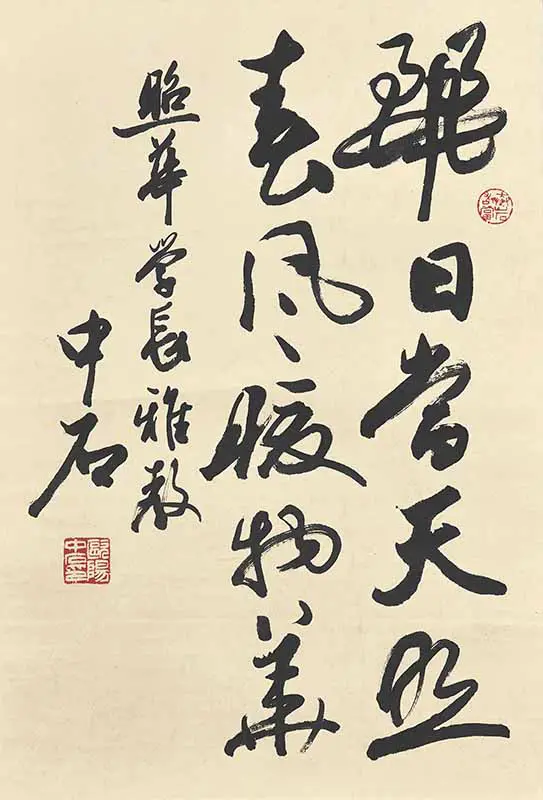
Inscribed and signed by the artist, with two seals
Dedicated to Wang Zhaohua (1921-2009)
67.2 x 45.8 cm.
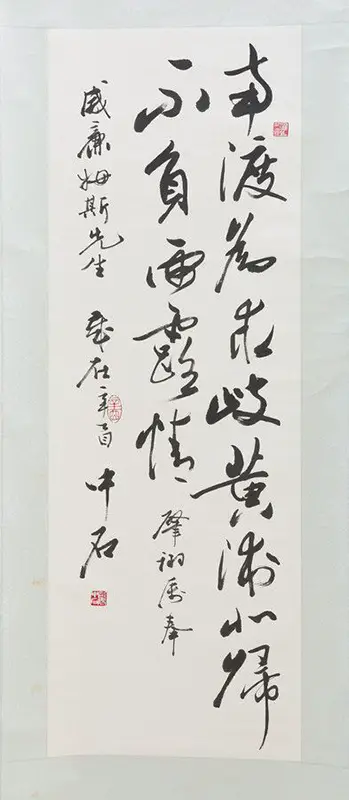
96.5 cm x 33 cm
In China, Ouyang Zhongshi’s is often displayed and curated by important cultural institutions, such as the National Art Museum of China (2013).
Where to find Chinese Calligraphy. Elementary 1?
A Spanish edition of Chinese Calligraphy. Elementary 1 was published in 2015. It can be purchased at the BookDepository or on Amazon. The English edition can be purchased at PurpleCulture or Amazon.
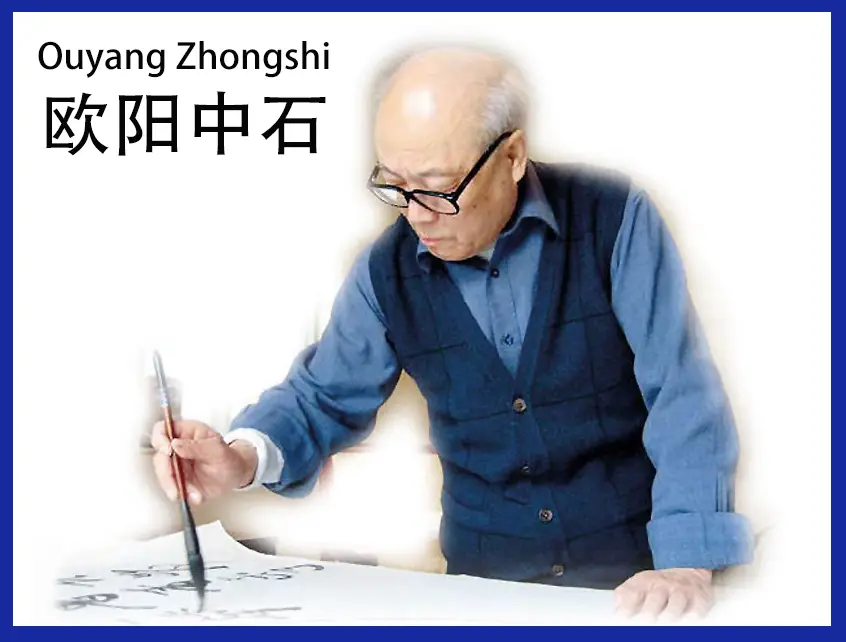


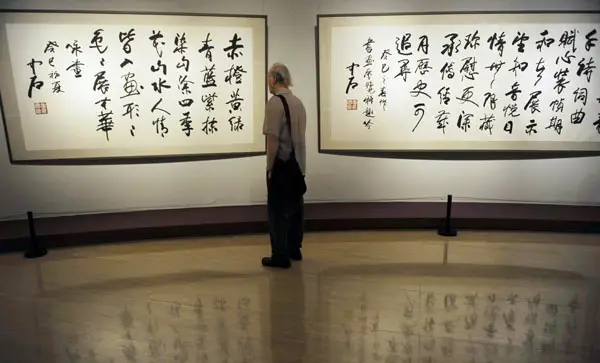
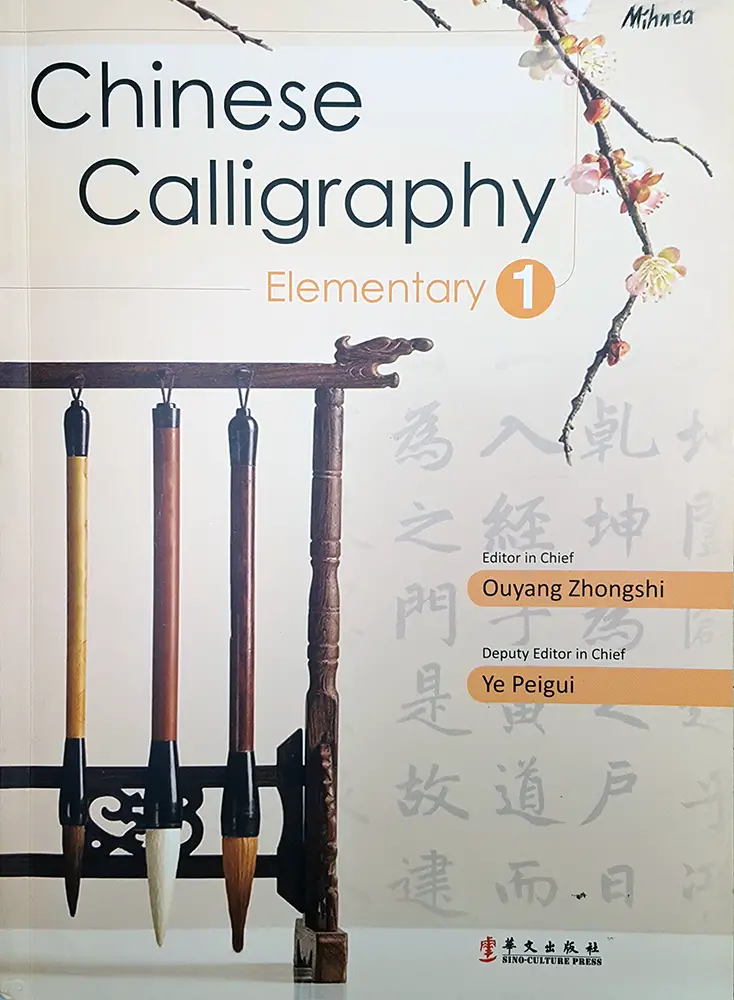


Nice article Mihnea, it’s the first time I read anything about it. Very interesting. Good luck with your Calligraphy lessons.
Martin
Thanks.